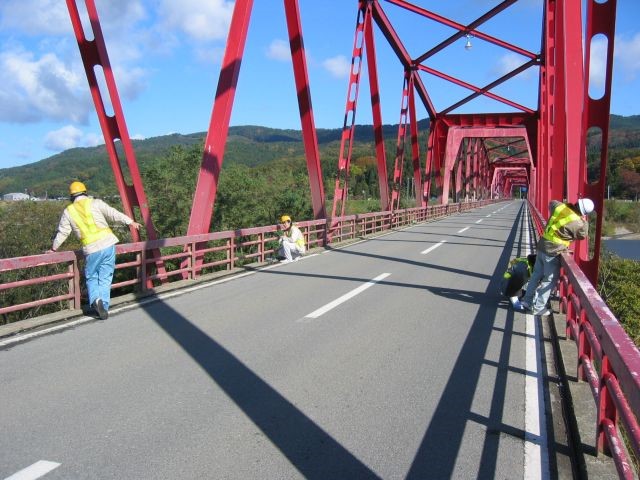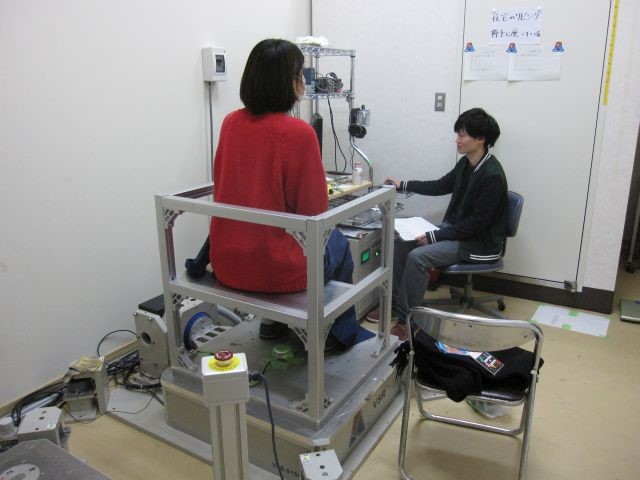Structural Mechanics and Dynamics Group, Saitama UniversityDepartment of Civil and Environmental Engineering
Japanese | EnglishDepartment of Civil and Environmental Engineering
Saitama University
255 Shimo-Okubo, Sakura, Saitama 338-8570, Japan
Structural Mechanics and Dynamics Groupp
Updated in March, 2019
History
Fig.1 Photo of group members at commencement in March, 2020
The Structural Mechanics and Dynamics Group, also known as the Structural Engineering Laboratory, is founded in 1970 by Professor Shunzo Okamoto (1970-1974, President of Saitama University 1974-1978), Associate Professor Narioki Akiyama (1967-1992), Research Associate Ryokichi Hamashima (1967-1981, then moved to Foundation Structure Engineering group). After that, enrolled staffs include Professor Toshie Okumura (1975-1980), Professor Hiroki Yamaguchi (1981-2014, President of Saitama University 2014-Present), Research Associate Chi Shen (From China: 1992-1996), Research Associate Rajesh Adhikari (From Nepal: 1995-1997), Research Associate Xu Xie (From China: 1996-1999).
Presently, three members, Professor Yoshiaki Okui (From 1989), Professor Yasunao Matsumoto (From 1999), and Assistant Professor Ji Dang (From 2013) are conducting research and education in SMDG.
Researches in the past decade
The Structural Mechanics and Dynamics Group conducts studies on statics and dynamics of civil engineering structures, such as bridges, for their planning, design, performance assessment and maintenance. The research activity of the group extends to human responses to vibration and noise, which provides solutions to evaluate the performance of structures.

Fig.2 Example of result of redundancy analysis of truss bridge
Prof. Okui leads research on structural mechanics, such as the mechanical behavior of new structural systems, and the relation between microstructure of structural material and its mechanical behavior and fracture phenomena. The research topics includes: (1) design method of steel bridges and steel-concrete composite girder bridges, (2) rational determination method of partial safety factor for bridges,(3) development of models of rubber bearings for aseismic design (Fig.2), and (4) assessment of redundancy and fragility for maintenance of bridges.

Fig.3 Vibration measurement in truss bridge
and health assessment
Prof. Matsumoto leads research on structural dynamics that includes characteristics and mechanisms of vibration and noise of structures induced by earthquake, wind and traffic and vibration control, and structural health monitoring based on ambient vibration measurement. Examples of the previous researches are (1) the identification of damages in an existing steel truss bridge based on vibration measurements (Fig.3), and (2) the mechanisms and control of noise from modular expansion joint for road bridges.

Fig.4 Vibration Experiment involving human subjects
In relation to performance of structures and habitability created by infrastructure development, research on human responses to vibration and noise are lead by Prof. Matsumoto. Outcomes of experimental studies involving human subjects (Fig.4) and analytical studies are utilizing in technical advancement of civil engineering structures, such as buildings and bridges, and transportation systems.
Resent research interests
Resent research interests of Prof. Okui are including the above mentioned researches such as development of rheology models of rubber bearings for aseismic design and temperature dependence of rubber bearings, and new researches such as the capacity of stiffened steel plate, load rating of existing bridges.
Prof. Matsumoto is recently conducting researches such as structural health monitoring based on dynamic behavior of bridges, control of construction vibration, and the vibration serviceability of building structures.
Asst. Prof. Dang, joined the group from 2013, are not only continuing the jointed researches, such as the seismic performance of rubber bearing and steel bridges piers under bidirectional earthquake excitation, and aging deterioration problems of rubber bearings, with enrolled universities, but also exploring original directions such as structure vibration measurement using smart devices, and structural inspection using UAV (Drones).
Future Plans
In SMDG, education for students is performed with the cooperation of the three staffs. Staffs can conduct their own research interests, but also cooperate together. This form of organization would be like to be continued in the future. The future research plans of the three staffs are as following.
Okui: Rational design methods and maintenance methods for bridges are going to be continually studied. Matsumoto: We are seeking further progress of the studies we have conducted recently with “vibration” as a keyword for an aim to apply research outcomes in practical problems. Those studies include health and performance assessment of bridges based on their dynamic characteristics, estimation and control of environment vibration In addition, we would like to enhance collaboration with experts in different fields because there have been increasing needs to integrate knowledge from various fields in research and practical problems.
Dang: Structures is going to be attacked by unexpected earthquake. Function-Separated Structure concept and Seismic Performance Design using Risk concept should be considered from now on. Considering the undergoing of aging of Infrastructures and the aging and decreasing of inspection engineer in Japan, new technologies such as Smart Devices and UAV (Drones) should be considered to put into use for structural monitoring, real time structural damage evaluation due to large earthquakes, structure visional inspection, and emergency fast inspection after earthquake. It would be essential to contribute the social by implementing 21st century technology as well as developing future technology for civil engineering.



